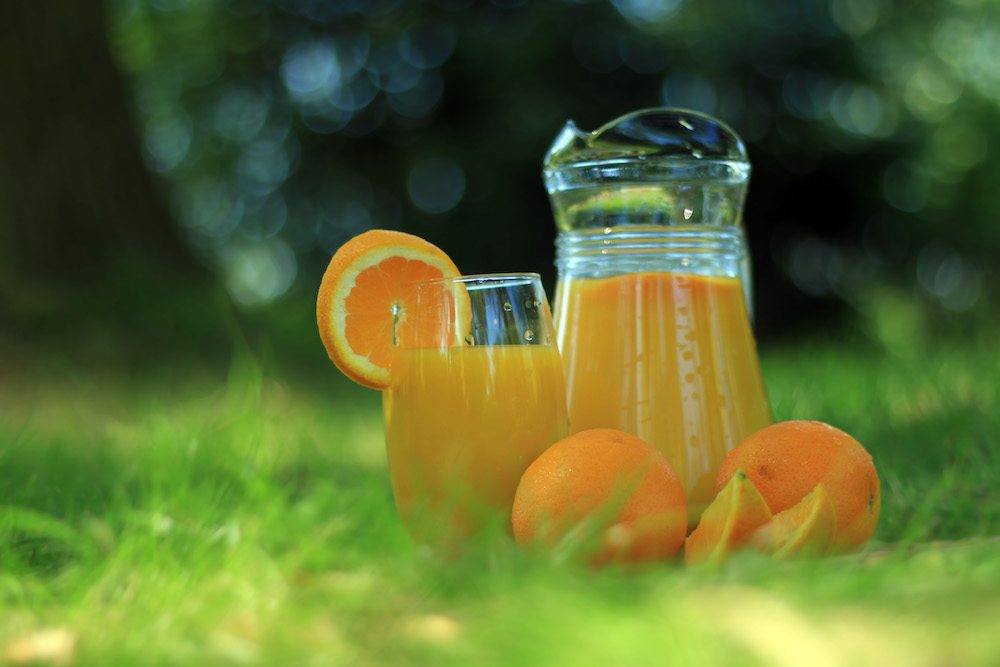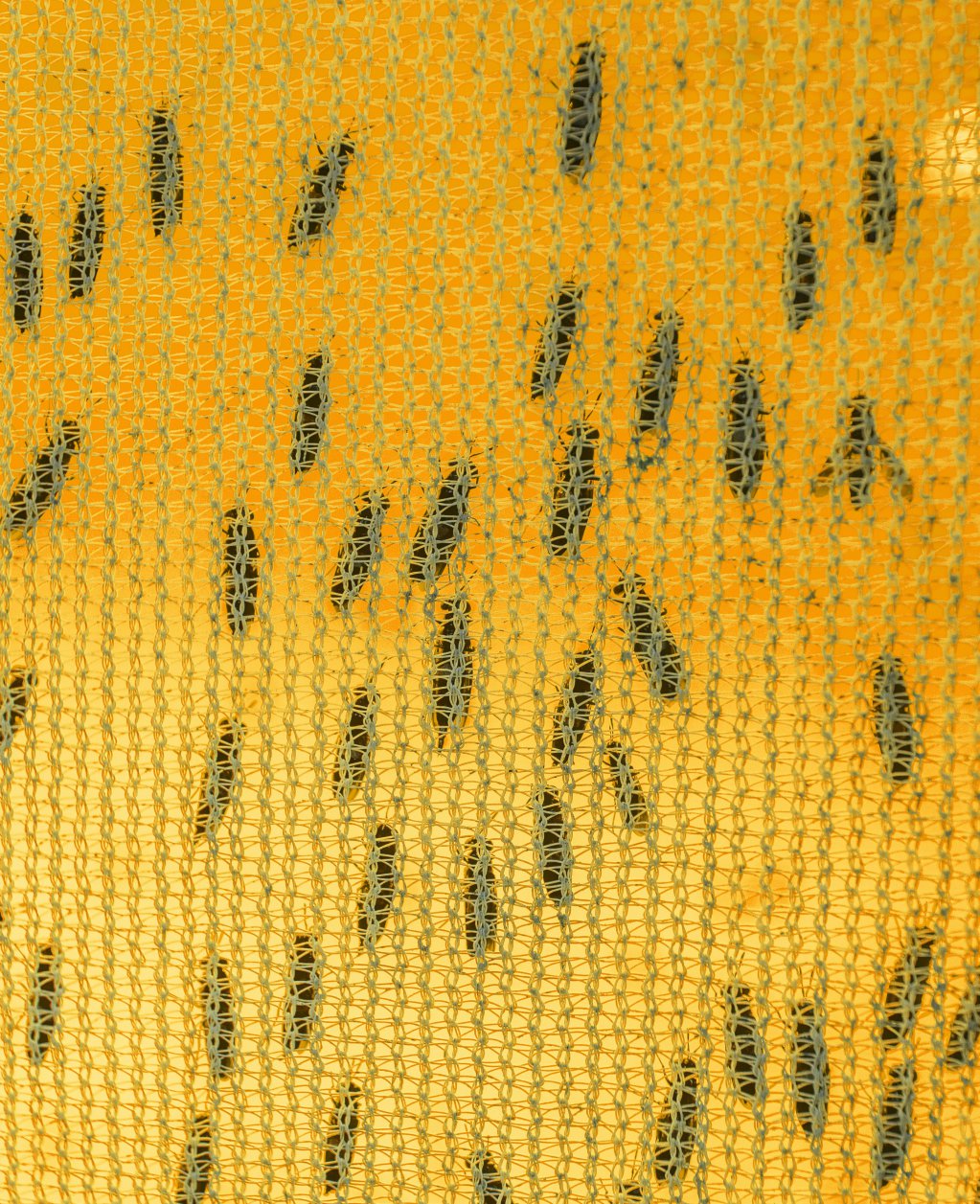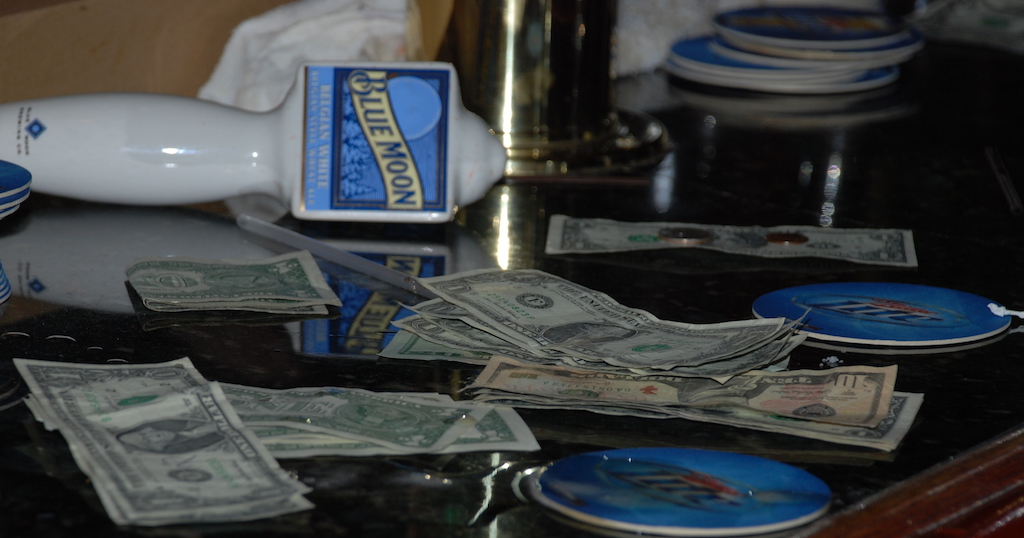
Jeshoots
Pop quiz: Which of these products should be allowed to label itself as “healthy”?
- 1. A drink that contains about five teaspoons of sugar per eight-ounce serving
- 2. A drink that contains about 200 percent of your daily requirement of vitamin C
- 3. A drink that decreases “bad” cholesterol in people with high cholesterol and improves lipid transfer to “good” cholesterol in people with normal and high cholesterol (according to a study paid for by the world’s largest manufacturer of the product)
OK, you caught me. It’s all the same product, that mainstay of the breakfast table: orange juice.
I bring it up, of course, because the Food and Drug Administration (FDA) has just issued its latest guidelines on the use of the word “healthy” and a half dozen related terms on food labels. It’s part of a somewhat belated effort to bring the labeling laws in line with current thinking about a healthy diet. They’re a bit of a disappointment, but, more importantly, they raise the question of whether they’re likely to get much better as FDA keeps working with them.

The truth is, the old standards had problems. For one thing, they weren’t particularly intuitive, something that I’d argue is important if you’re trying to inform and change the behavior of ordinary consumers. Take the sodium rules. If a company wants to label its product as “healthy,” it has to meet one of the three following standards: If its Reference Amount Customarily Consumer (RA) is greater than 30 grams, the product has to have 480 milligrams or less of sodium per RA and per Labeled Serving Size (LS) (which might not be the same thing, as anyone who has ever eaten potato chips is well aware). If the RA is 30 grams or less, the sodium needs to be 480 grams or less per 50 grams. If the product qualifies as a meal product, then the limit is 600 milligrams per LS.
The rule probably makes all kinds of sense…to someone. But do you get it? Me neither. And that’s a problem in a rule that’s supposed to persuade skeptical customers to change their behavior.
And of course there were areas where the rules really weren’t in line with the new Dietary Guidelines (eighth edition) issued in January 2016, as the makers of Kind bars pointed out in a citizen petition to FDA last December. The guidelines, Kind argued, “shined attention on the importance of eating certain foods, including vegetables, fruits, whole grains, low- or nonfat dairy, seafood, lean meats and poultry, eggs, legumes, and nuts and seeds, in achieving better health and wellness. This is in contrast to prior federal dietary guidance, which placed greater emphasis on the specific nutrient levels in the diet rather than the overall contribution of recommended foods to a healthy diet. Many current federal labeling regulations are based upon this past thinking, preventing foods that contain beneficial whole ingredients and are recommended for consumption—like nuts, avocados, olives, and salmon—from bearing the word ‘healthy’ in their labeling.”
The new guidance takes care of that problem, sort of. It states that products can be described as healthy even if they’re not low-fat, as long as more than half of the fat is unsaturated or monounsaturated. And where the old rules required a product to supply 10 percent or more of the Daily Value of vitamin A, vitamin C, calcium, iron, protein, or fiber, the new guidance adds potassium and vitamin D as new options.
In other words, a patch, not a solution. Which should hardly be a surprise. The new Dietary Guidelines are aspirational, not quantitative, and aspiration doesn’t really play well in a regulatory context. What’s good about the guidelines is that they emphasize eating actual food. They’re more about your diet than about individual food products. That makes them difficult to translate into narrow, enforceable regulations.
So the next step is for FDA to do that hard work and give us labeling rules that match up to the guidelines, right? That way, a food product labeled as “healthy” would be scientifically proven to be healthy.
That, however, depends on how you feel about the guidelines and the science behind them. For my own part, I find myself thinking about an idea from the social sciences known as Goodhart’s Law. The law, in its popular form, states that when a measure becomes a target, it ceases to be a good measure. It’s the principle that explains why things go south when you attempt to manage schools and teachers by giving high-stakes tests. If everyone knows that they’re not being judged by the full range of their accomplishments, but just by a single test result, they’ll game the test and education be damned.

Some say research funded by the sugar industry launched to the age of obesity
Food has a bad case of Goodhart’s. Manufacturers want to meet FDA standards, so they jigger with formulations, sometimes in ways that leave the product less satisfactory. (Think of the manufacturers in recent years who met low-fat standards by removing fat and replacing it with sugar to make the product palatable: Standard met, product degraded.) And the guidelines themselves are the product of a process that’s riddled with metrics-turned-targets. Companies need favorable scientific research, so they give grants to scientists they deem likely to come up with the right answers, as in the truly distressing case of the sugar industry’s sponsorship of the research that, some say, launched the age of obesity and diabetes by refocusing regulators and physicians on fat instead of sugar as the leading dietary villain. Scientific journals need to sell expensive subscriptions, so they tend to favor interesting and novel conclusions and shortchange negative results and replication of previous work, much of which, ultimately will prove wrong. And scientists need to publish in those journals and need grants to hold onto their jobs, so they give the journals what they need and accept the money that allows them to do it.
I don’t actually believe that most scientists and journal editors are corrupt. But the system seems designed to give every participant in the chain a nudge in the wrong direction, and those cumulative nudges worry me. I truly believe that nutritional science is moving forward. But I mostly don’t want to hear about it when I’m in the supermarket. And I’m not at all surprised when even a carefully considered document like the Dietary Guidelines doesn’t achieve nearly the solid consensus we need it to have. (Here’s just one example of the level of reasoned disagreement the guidelines have attracted. You may or may not share the author’s perspective, but if this is at all reflective of the range of opinions among responsible commentators, it might be necessary to do some consensus building before issuing the next round of guidelines.) I don’t expect to see a sea change in nutritional wisdom like the one Woody Allen created for his sci-fi comedy Sleeper, in which a modern-day Rip Van Winkle awakes in a future whose “health food” is deep frying, steaks, and cream pies, but I don’t think we’ve heard the last of the fat and sugar wars.
And even if we have, surely we’ve finally awakened to the fact that what we need to think about is the healthfulness of a diet rather than the healthfulness of each of its components. A Kind bar is now allowed to label itself as “healthy.” That’s fine, as long as we all acknowledge that the label no longer applies if you eat a dozen of them in one sitting.
What to do? Well, it’s nice of FDA to try to tell us what to eat, but it’s clearly already over its head trying to deal with the food safety issues raised by more and better produce and more and better tools for testing for pathogens. Besides, in our gluten-free, paleo, low-carb, high-fat, low-fat, vegan, locavore, keto, dairy-free, grain-free world, it’s not likely that anyone’s going to believe what FDA says anyway.
Maybe it’s time to ban “healthy”—not the idea or the reality, but the word on a food label. New food entrepreneurs, many of whom are genuinely concerned with nutrition, might lose a marketing tool if “healthy” is banned from their labels, but for the sake of getting junk information (however well intended) off of our food packages, maybe we should all accept the sacrifice.










